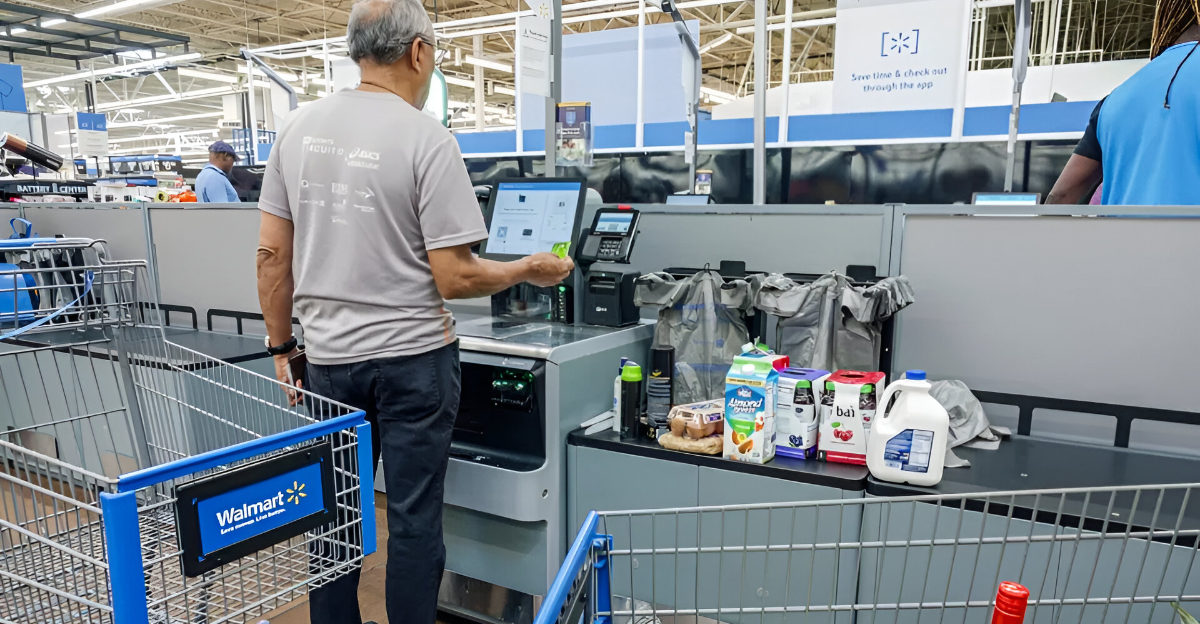
For years, Walmart has touted self-checkout as the fast, efficient, and customer-friendly retail future. But under the promise of convenience lies a darker reality: theft at high rates, frustrated customers, and a growing sense of chaos.
Police visits to a Missouri Supercenter fell by nearly two-thirds after self-checkout lanes were removed, showing how costly automation becomes when human oversight disappears.
It isn’t an issue of faulty machines or infinite lines; a retail giant is being forced to face the fact that technology can’t solve everything. When done wrong, it can fail spectacularly. Let us examine more closely.
The Theft Problem and the Self-Checkout Paradox

Walmart’s self-checkout lane experiment was a magnet for amateur and professional theft. In Shrewsbury, Missouri, police responded to 509 calls in five months before the kiosks were removed, after which calls fell to just 183.
Arrests dropped by more than half as well. Retail analysts swear that self-checkout increases shrinkage by a notable percentage, with far greater theft rates than in staffed lanes. The irony? Labor-saving tech eventually brought on losses that canceled out the savings. Ultimately, crime did not just affect the bottom line; it dictated Walmart’s hand.
When “Do-It-Yourself” Becomes “Do-It-For-Me”
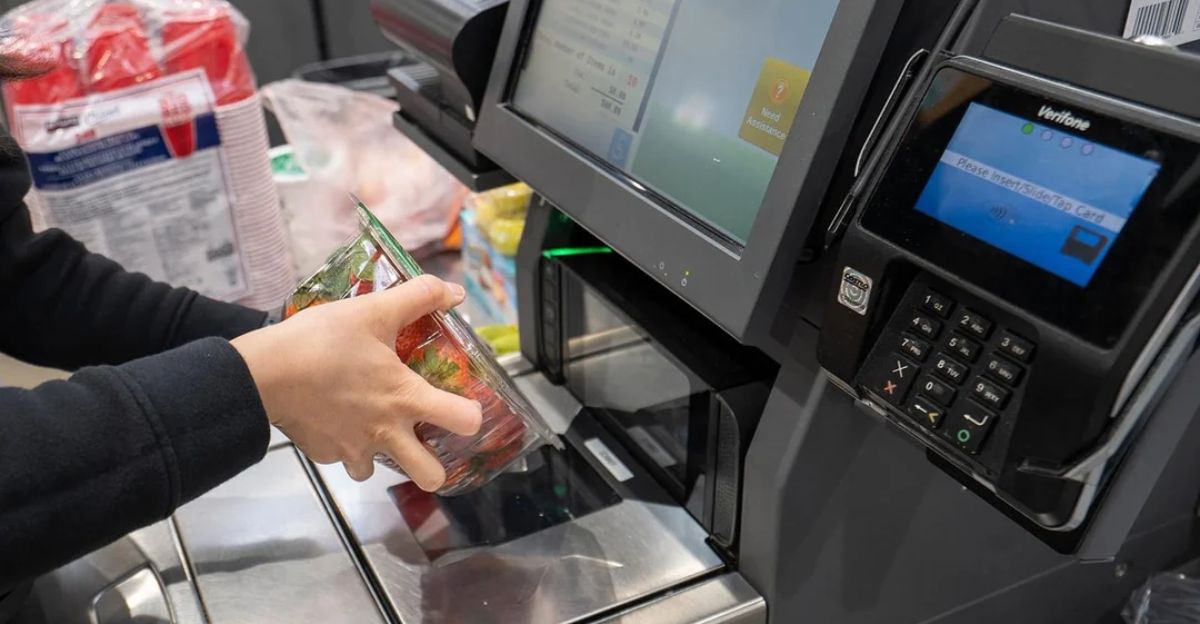
For all the fanfare, many Walmart shoppers never took to self-checkout. Technical glitches, confusing directions, and the inconvenience of scanning up to dozens of items caused widespread customer frustration.
Reports of lengthy lines at the few staffed registers remaining only poured gasoline on the customer outrage. Behavioral psychology explains this backlash: resentment grows when consumers feel they’re doing more work for the same price.
Walmart’s research showed that customer experience, not speed or technology, was by far the most significant driver of satisfaction. The lesson? Automation without empathy is a recipe for revolt.
Skimmers and Scams Creating Security Nightmares

Self-checkout didn’t just make shoplifting easier; it opened the door to high-tech scams. Criminals had placed skimming devices on kiosks that swiped credit card data, exposing Walmart to huge security threats.
A mispricing issue occurred at 1,600 stores in March 2024, costing the company money and causing lost trust. The drive to automate all things retail would undoubtedly lead to vulnerabilities that hackers and scammers were happy to find.
So, even in the days of “the future of retail,” a playground of cybercrime, Walmart could only mop up the mess.
The Labor Illusion—Why Reducing Headcount Backfired
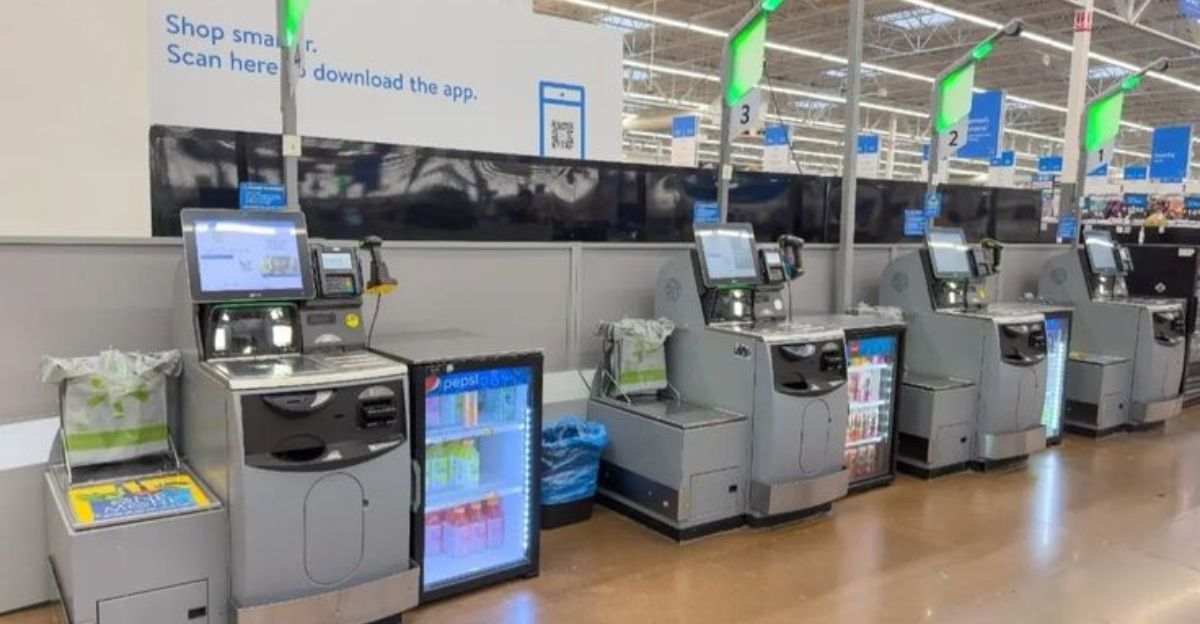
Walmart’s initial bet was simple: fewer cashiers, lower costs, greater profits. However, as theft exploded and customer satisfaction tanked, the company introduced more employees to monitor self-checkout areas and deal with complaints.
The net outcome? Labor costs didn’t fall; they shifted, often rising due to the need for extra supervision. The promise of “efficiency through automation” collapsed under the weight of human unpredictability. Sometimes the cheapest solution is the most expensive mistake.
The Psychology of Effort When Technology Feels Like a Burden
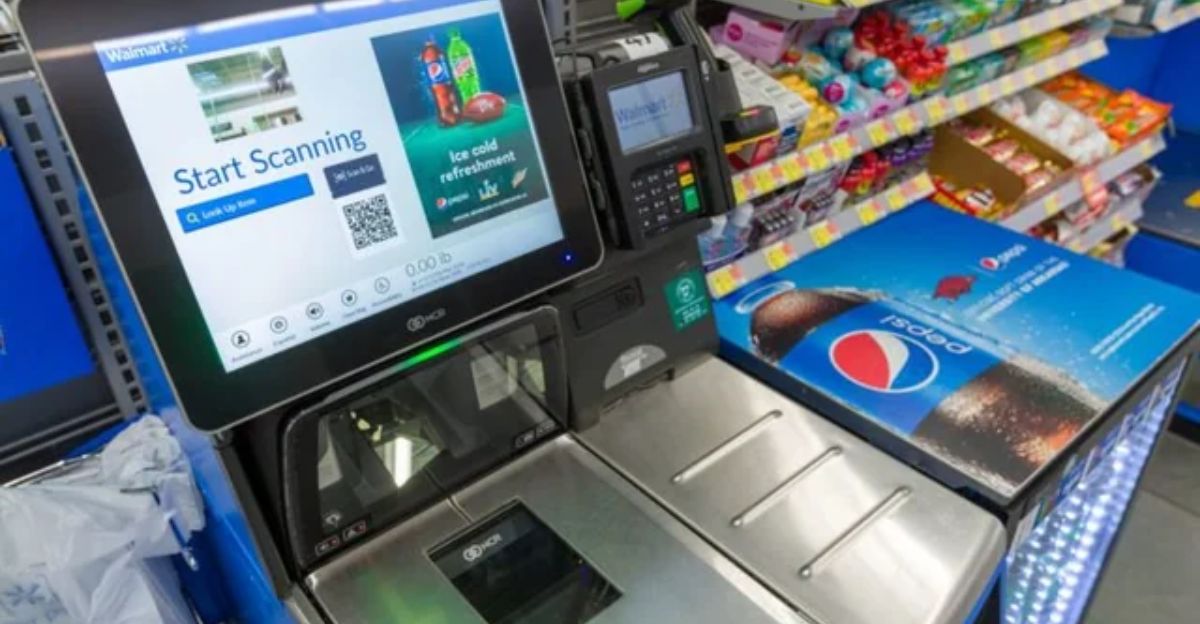
Social Exchange Theory gives a harsh answer: people expect fair value for their work. The self-check at Walmart shifts the responsibilities of scanning, bagging, struggling with malfunctioning machines, etc., to consumers and doesn’t change prices or improve the experience.
Thus, consumers are well-informed about feeling ripped off, inspiring bad word-of-mouth and deteriorating loyalty. When technology makes consumers think there is effort without an acknowledged payoff, even the most devoted customers will find elsewhere to shop.
How Walmart’s Move Will Reshape Retail
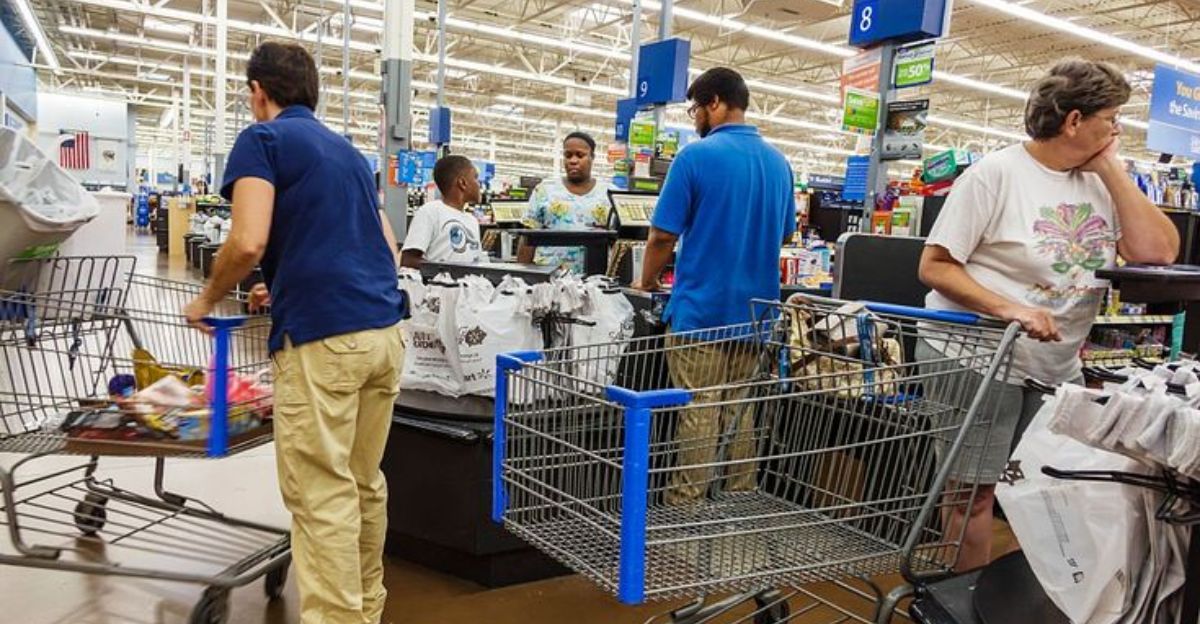
Walmart’s decision to end self-checkout isn’t just a unique event; it is a warning to the entire industry. Other retailers will see Walmart’s discomfort and rethink their automation strategy.
Expect a growing wave of changes: more staffed lanes, more investment in employee training, and a return to real human service from “frictionless” shopping. The even larger second-order effect? A retail revival and hot customer service skills again!
Technology Doesn’t Always Provide the Answer: A Contrarian Perspective

Walmart’s retreat is a seismic shift in a world obsessed with technology and digital disruption. It’s the first break in the convention that the more technology there is, the better off we are.
Sometimes, the most significant innovation is removing anything that doesn’t work, even if it means throwing in the towel. If Walmart’s move leads to other sectors reassessing automation and asking themselves, Where does the human touch add value?
The vital nugget here is that progress is not about the latest technology but the most innovative use of it.
What’s Next? The Emergence of Hybrid Retail

Walmart’s abrupt change may usher in a new era of “hybrid retail,” blending technology with warm human service.
Expect more intelligent, more clever self-service options, only where it makes sense, and a rediscovered emphasis on employees who can repair, prevent shoplifting, and encourage loyalty. The third-order outcome?
We envision a retail world that balances efficiency and kindness, with technology and automation supporting people rather than replacing them.
Walmart’s Wake-Up Call for the Age of Automation

Walmart’s announcement to remove self-checkout lanes is more than a business decision—it’s a wake-up call to a digital world.
The test failed, not because technology is bad, but because it was abused: ignoring human nature, underestimating human criminal ingenuity, and overestimating cost savings ultimately at the customer’s expense.
The message is clear: reputable companies will never cross the threshold of trust, security, and the human element, no matter how far they go to automate in all forms. The future for Walmart is not automatic; it’s responsible.
Discover more trending stories and Follow us to keep inspiration flowing to your feed!

Craving more home and lifestyle inspiration? Hit Follow to keep the creativity flowing, and let us know your thoughts in the comments below!
